- Home
- ABOUT US
- Shiseido Talks
- Nasu Factory’s Innovative Initiatives in Conserving Clean Water
Nasu Factory’s Innovative Initiatives in Conserving Clean Water
~Appreciating the Value of Ohtawara City’s Water
While Delivering High-Quality Skincare Products~
February 15, 2023
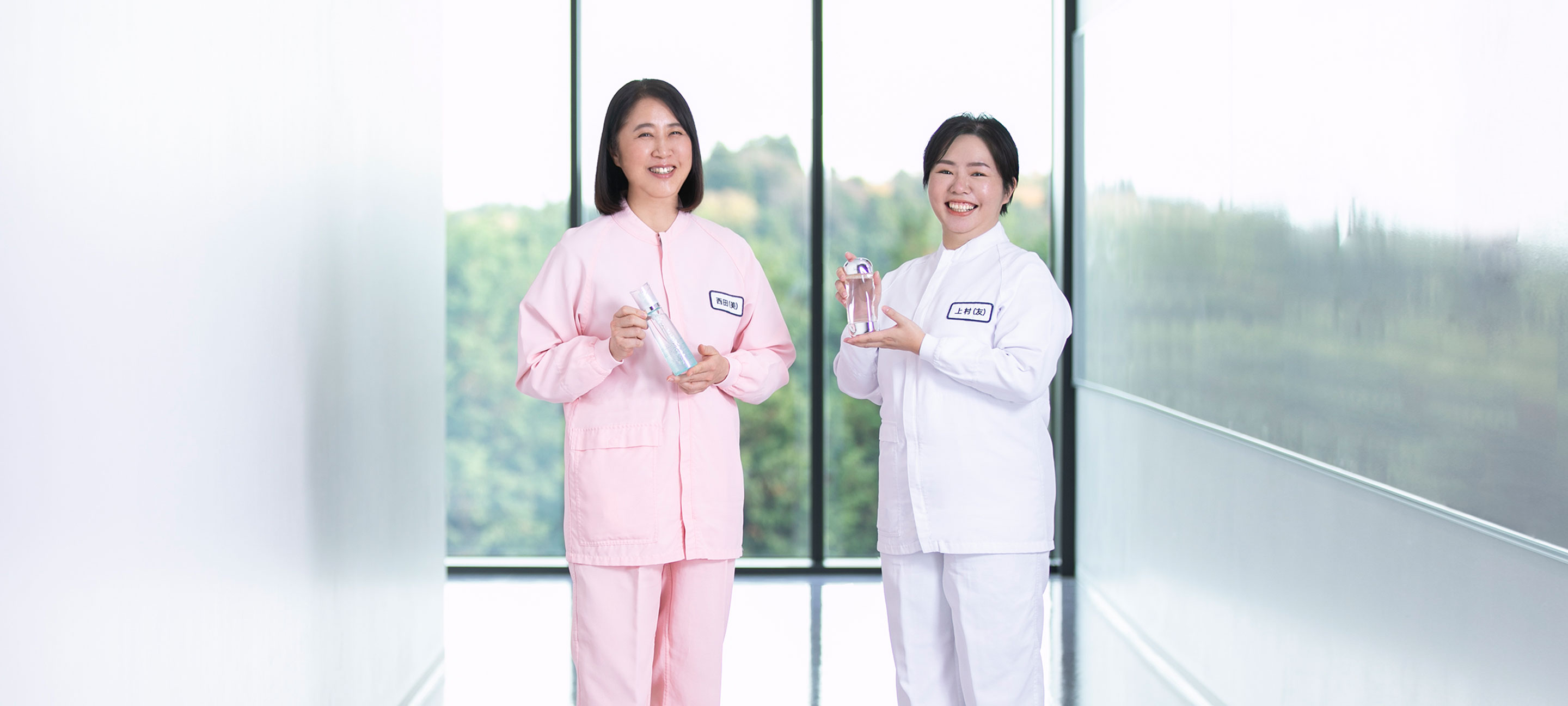
The name “Shiseido” is derived from a line in the Chinese Yi Jing (Book of Changes) which says, “Praise the virtues of the Earth, which nurtures new life and brings forth significant values.” Our mission of sustainable value creation that is part of our company’s past, present, and future, is engraved in our name “Shiseido.” As such, we have undertaken various initiatives to address environmental issues that have grown more and more serious in recent years.
Water is indispensable to our lives and businesses, and it is also one of the critical raw materials in the manufacturing of skincare products. The Nasu Factory was completed in Ohtawara City, Tochigi Prefecture, in 2019 and utilizes the area’s local features, such as its abundant water resources. Moreover, it uses high-quality manufacturing practices and carries out environmental initiatives from the unique perspective of appreciating and respecting Ohtawara’s pure water, so that recirculating it as well.
We interviewed Nasu Factory Manager Miharu Nishida and Tomomi Kamimura from the Environmental Secretariat of the Nasu Factory to discover more.
Conserving water and manufacturing more environmentally and human-friendly products
―What kinds of products are primarily manufactured at the Nasu Factory?
Nishida: Shiseido currently has six factories in Japan, and the Nasu Factory was completed in 2019 as its fourth domestic operation.
The production line at the Nasu Factory mainly manufactures mid-to-high price point skincare products such as ELIXIR for the Japanese and overseas markets. The Nasu Factory is designed and fully equipped to achieve the “premium quality” that is Shiseido’s strength. It also provides an environment where those who put quality first can work comfortably and grow. For these reasons, we are able to manufacture high-quality products both sustainably and reliably.
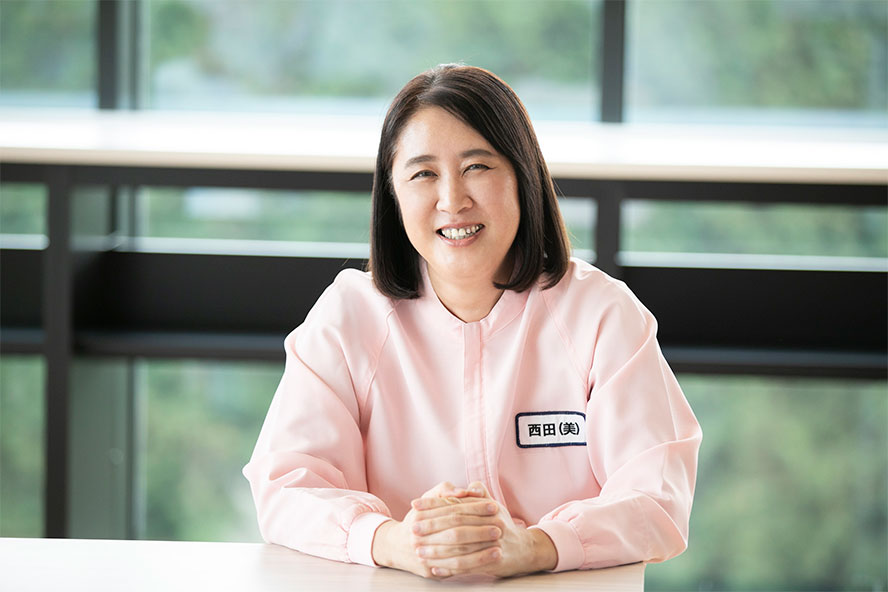
Miharu Nishida, Nasu Factory Manager
―What are some of the special characteristics of the water you use to manufacture skincare products at the Nasu Factory?
The beauty of the water is evidenced by the presence of fish such as miyakotanago (Tokyo bitterling) and itoyo (three-spined stickleback). These fish, which have been designated as protected species by Japan and Ohtawara City, respectively, can only survive in clear, clean water, and it is in these rivers they breed. Moreover, as the area is blessed with fertile land home to extensive rice paddies, rice cultivation and sake brewing also thrive here.
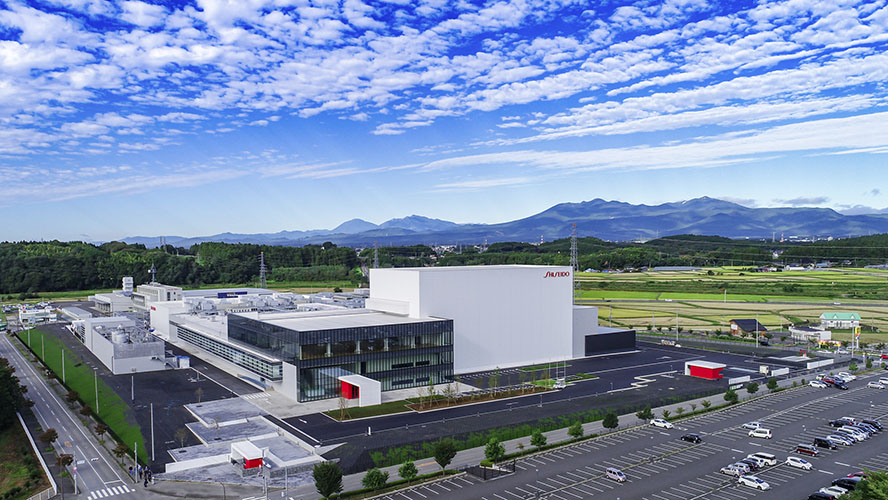
―How do you manage and utilize the local water?
Kamimura: The quality of the well water pumped up from underground in this area is quite good and is pure enough to drink as is. But, in order to use it for high-quality skincare products that give customers peace of mind, we purify it even further.
We have a ten-step process that includes additional purification, filtration, electrical treatment, sterilization and more. It is only then that the water is permitted for use as a raw material for cosmetics.
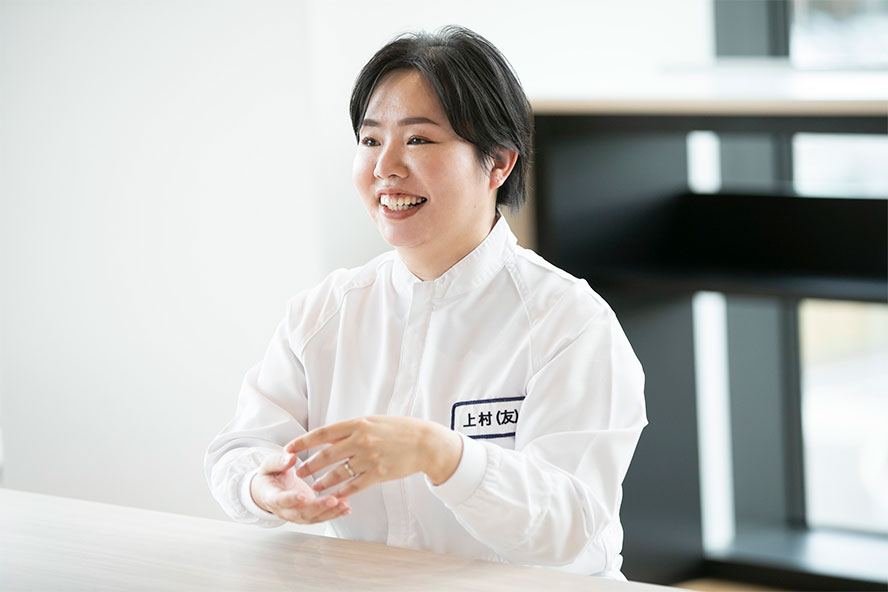
Tomomi Kamimura, Environmental Secretariat
of the Nasu Factory
―Ten steps! That is a very strict standard.
―I understand there are also very strict in-house standards for wastewater.
Kamimura: As you can see, the wastewater treatment facility at our factory is very impressive. Here in Tochigi Prefecture, agriculture is thriving.
Therefore, strict wastewater standards have been stipulated by prefectural ordinances. We have established even more stringent in-house standards for the Nasu Factory, and we treat water after it is used in manufacturing based on these standards.

Wastewater treatment facility
We here at the Nasu Factory aim to ultimately “recirculate” the water rather than just “consume” it.
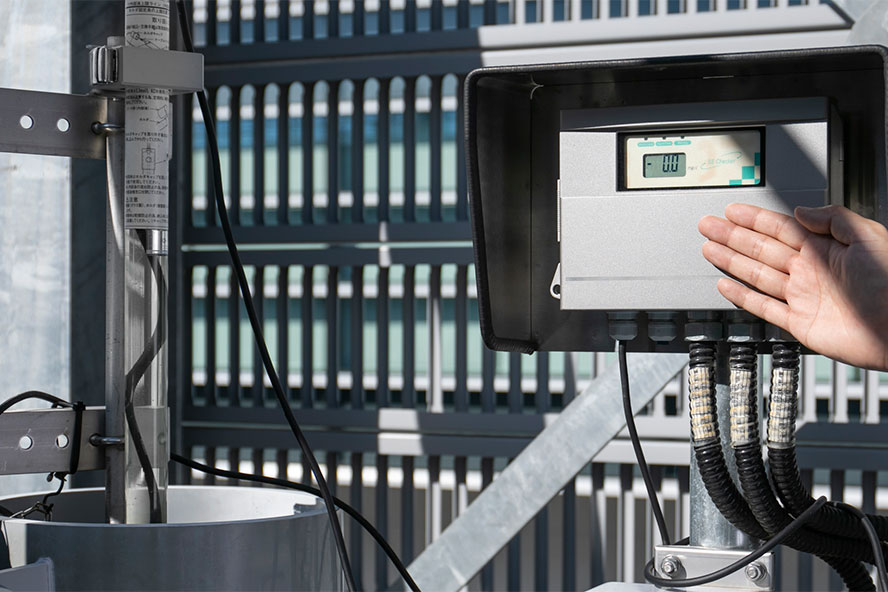
Water quality measurement equipment
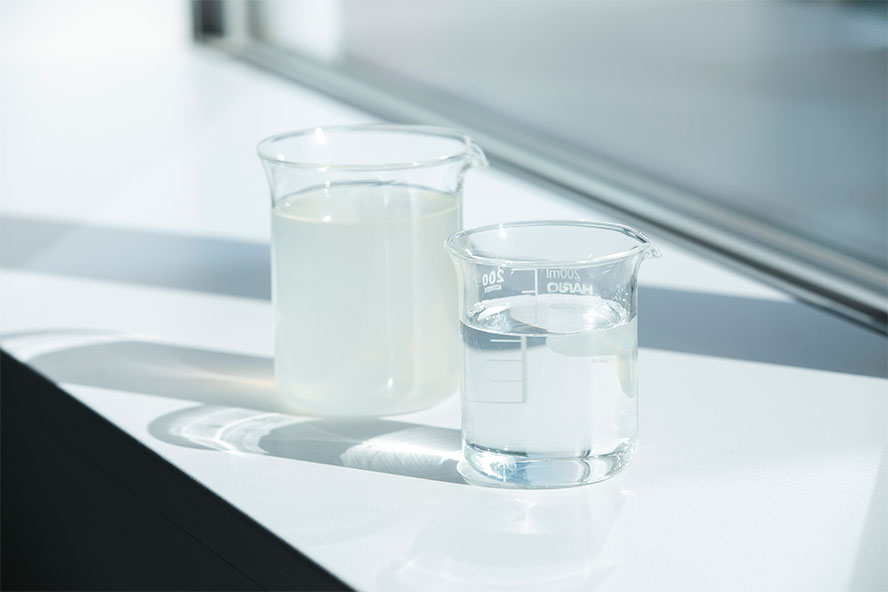
Before treatment (left) After treatment (right)
―I heard the Nasu Factory has a system for water conservation.
In the end, we achieved a reduction of about 45% in our water consumption in the purification process.
―A reduction of nearly half is significant, isn’t it?
Since becoming a member of the secretariat and gaining more opportunities to distribute information related to the environment, I have started receiving more questions and consultations from colleagues in the factory.
So, I feel environmental awareness at the factory is increasing as well.
Working with the local community to conserve Ohtawara’s water
―It looks like the Nasu Factory is coexisting in harmony with the local community as well.
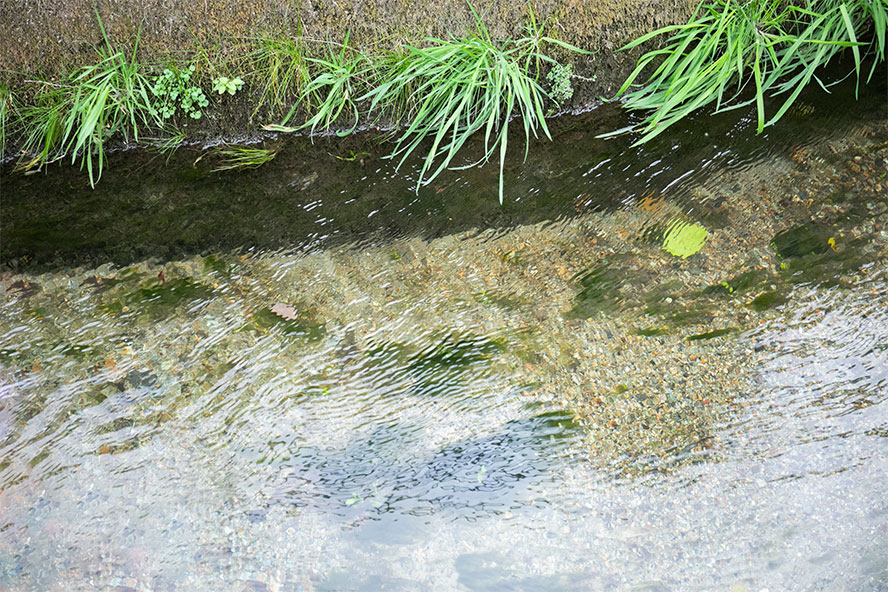
Water that is discharged must meet
our strict factory standards
Nishida: Exactly. Water is a resource that circulates on a worldwide scale. Globally speaking, not all countries have an abundance of water like Japan does.
Thankfully, though, Japan has plenty of water with an average rainfall that is twice the world average. Even within Japan, Ohtawara City is particularly rich with water. I believe we have a responsibility to the local community and always be aware that we are using precious local resources. Saving water is of course one of the things we must do, but it is also important to keep recirculating the water.
―Did you encounter any opposition from the local community when this new factory was built?
I hope we can deepen our relationship of trust with them and work towards a future in which we can do more and more together.
Talking water conservation with the Nasu Factory
―Do you have other environmentally focused initiatives?
This year, we also became certified under the international environmental management standard ISO14001. In addition to the careful use of water, we will continue other efforts to be environmentally friendly.
―What challenges do you want to undertake at the Nasu Factory in the future?
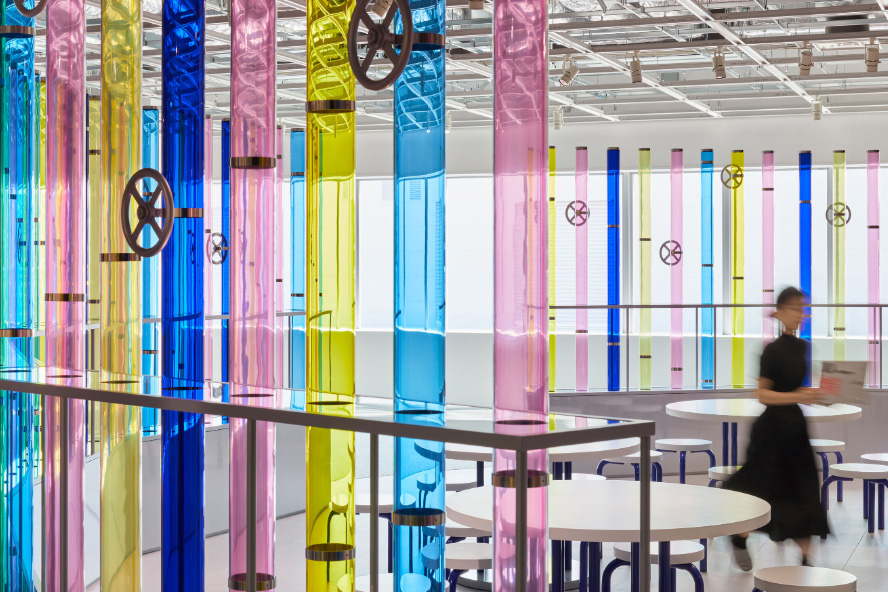
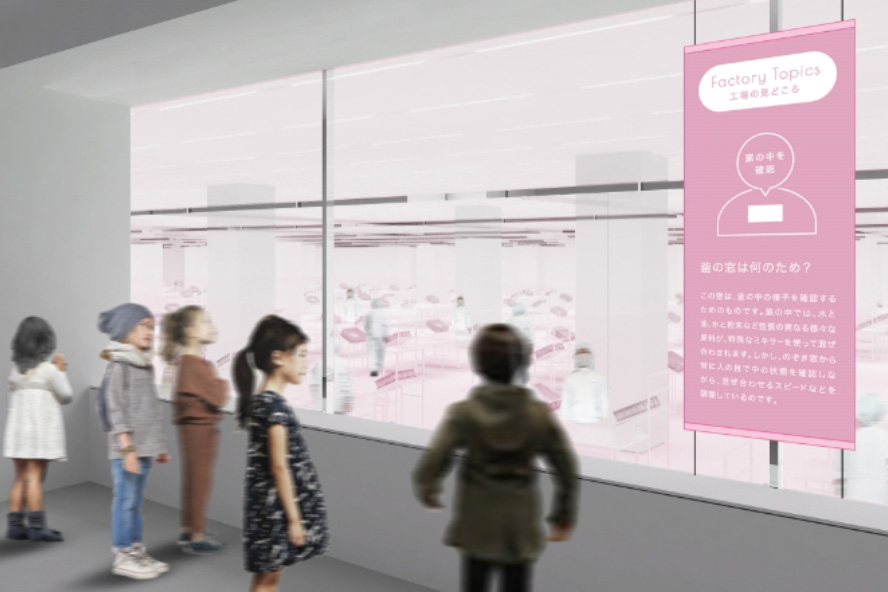
BEAUTY PLAYGROUND, a hands-on tour of the facilities
at Nasu Factory
As a company engaged in manufacturing processes that use local water from Ohtawara, we will put more effort not only into water conservation, but also recirculating water as well. I would also like to boost the factory’s public relations activities in its capacity as a hub for information.
ABOUT US
- Who we are
- History
- Profile
- Governance
- Quality Management
- Supply Network
- Region/Business
BRANDS
- Prestige
- Premium
- Inner Beauty
- Life Quality Makeup
SUSTAINABILITY
- Strategy / Management
- Society
- Environment
- Governance
- Reports / Data
- Related Information
INNOVATION
- Research and Development
- Research Areas
- Research outcomes
- Product safety
- Product Development Policy
- Initiatives for doctors and researchers
CAREERS
INVESTORS
- IR Library